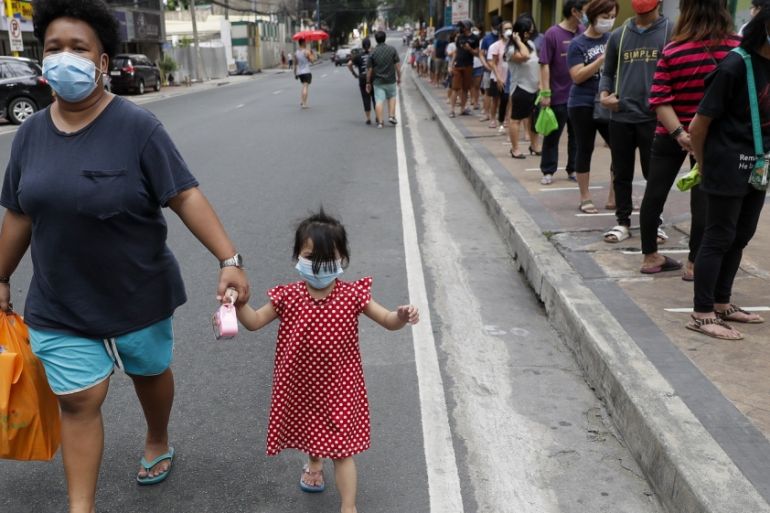Asian governments warn of more economic, fiscal pain from virus
The Philippines warns of negative growth and Thailand imposes one-month emergency as cases climb in the region.

Until the coronavirus outbreak reached its shores, Southeast Asia was home to some of the world’s fastest-growing economies. But its leaders are now bracing for negative growth as the pandemic affects tourism, trade and consumption – sectors that many of these countries rely on.
The Philippines said that its economy could contract for the first time in more than two decades this year due to the fallout from the coronavirus pandemic.
Keep reading
list of 3 itemsFears Bali will emerge as Indonesia’s coronavirus hotspot
Thailand shutdown: Workers in informal jobs struggle to survive
Growth this year could be between negative 0.6 percent to 4.3 percent without mitigating measures, the country’s economic planning agency said on Tuesday, with half of the country’s population under lockdown, and while strict travel restrictions remain in place.
Estimates assumed that the adverse impact of the fast-spreading virus will be felt until June, the agency added. Hitting the upper end of the forecast would only be possible if the Philippines can stem the effects of the coronavirus and strict home quarantine measures on the rest of the economy.
The Philippine central bank announced a 2 percentage-points reduction in the reserve requirement ratio (RRR) of banks on Tuesday, just a few days after it opted for a deeper-than-expected 50 bps cut in policy rates to counter the economic blow of the virus. The RRR determines how much money commercial banks need to retain with the central bank; lowering the ratio allows banks to lend more to borrowers, with the hope of stimulating economic activity.
The central bank also approved on Monday a 300 billion pesos ($5.87bn) programme to support the government’s fight to stave off the impact of the virus, which has killed 33 people and infected 501 in the country.
Meanwhile, Indonesia‘s government may need room for its budget deficit to exceed the 3 percent of gross domestic product (GDP) legal limit as the country battles the spread of the coronavirus and its economic fallout, Deputy Finance Minister Suahasil Nazara said on Tuesday.
He told an investor call that the government is increasing health spending to 1.5 percent of GDP from 0.8 percent of GDP by reallocating other spending, but he said the government was gearing up for even more spending as the virus spreads.
A parliamentary committee has suggested the government raise the cap to 5 percent of GDP.
Indonesia’s central bank governor, Perry Warjiyo, said Bank Indonesia continued to inject dollar liquidity into the market and to buy back bonds from the market to help support the rupiah.
“The dollar liquidity is there, no need to panic,” he said. The rupiah on Monday hit its lowest level since the 1998 Asian Financial crisis.
In Thailand, the cabinet on Tuesday approved additional stimulus measures worth 107 billion baht ($3.25bn) in a bid to mitigate the impact of the coronavirus outbreak.
The measures include cash handouts, soft loans, emergency loans, tax breaks, Deputy Prime Minister Somkid Jatusripitak told reporters after a cabinet meeting.
On the same day, Thai Prime Minister Prayuth Chan-ocha said the country would be in emergency mode from March 26 for a month to deal with the outbreak.
The emergency decree will mean the prime minister will have the executive power to declare further measures to contain the virus, including giving extra authority to officials and allowing the setting up of checkpoints to reduce the movement of people, Prayuth said.
Earlier on Tuesday, Thailand reported 106 new coronavirus cases and another three deaths, taking the total to 827 cases and four deaths.